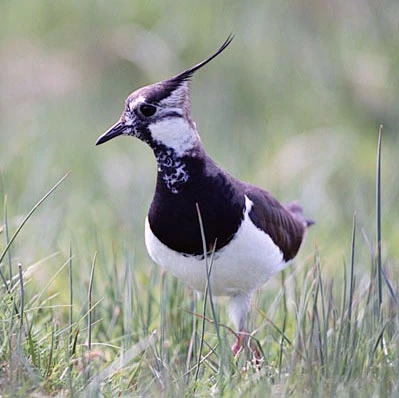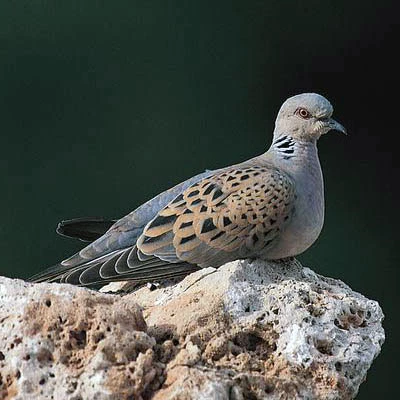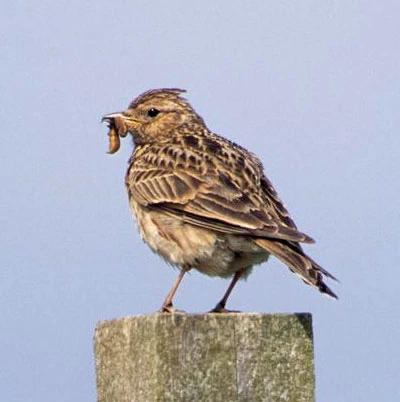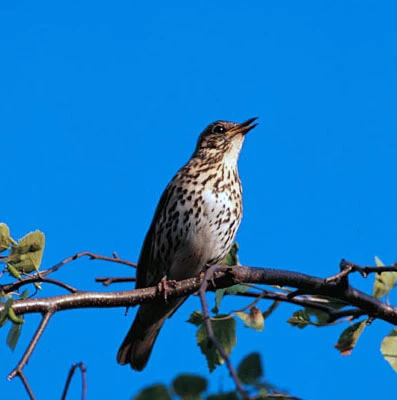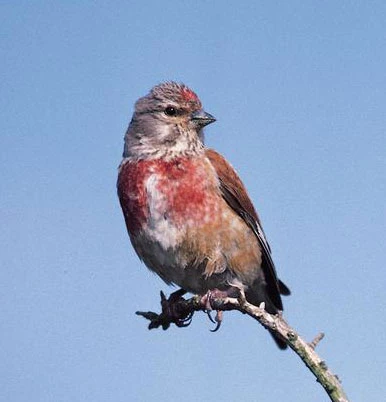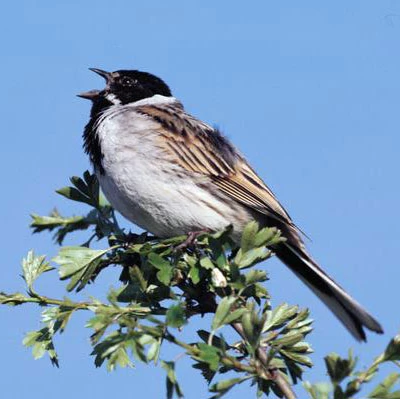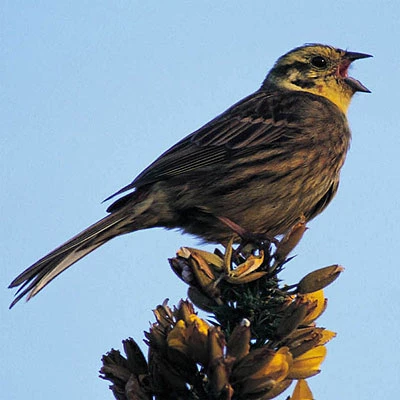Britain's farmland birds in trouble
Lapwing (Vanellus vanellus)
Lapwing
The British population dropped by 40% between 1970 and 1999. They mainly breed on damp meadows and rough pasture. In winter they can be found in large flocks on ploughed fields and coastal salt marshes.
The draining of damp meadows and the change to sowing crops in autumn have had the most impact on them. There are now fewer ploughed fields for them to feed on in winter, and by spring crops are too tall for them to nest in.
Managing lowland farms to provide the right habitat works. Recreating damp meadows leads to an increase in breeding birds.
Grey Partridge (Perdix perdix)
Grey Partridge
The British population dropped by 86% between 1970 and 1999. They breed in rough field edges with hedgerows nearby. They do not move far in winter and are found in more or less the same places.
The loss of hedgerows, spraying of field edges with weed-killer and the change to sowing crops in autumn have had a severe impact on them. This has removed nesting sites and winter feeding areas.
The good news is they respond very quickly to improvements to their habitat. Numbers of breeding birds can be doubled within two years simply by providing the right habitats at the right time of year.
Turtle Dove (Streptopelia turtur)
Turtle Dove
The British population dropped by 71% between 1970 and 1999. They breed anywhere there is sufficient cover of hedges, trees and bushes. They winter around agricultural land in Africa, south of the Sahara desert.
They have suffered from the loss of field edges like the Grey Partridge. There are now fewer seeds of wild plants for them to feed on.
They face an additional obstacle too. They are hunted as they fly across Europe. Large numbers are shot in spring as they head back to Britain. European regulations have reduced this slightly but it still goes on, reducing numbers even further.
Skylark (Alauda arvensis)
Skylark
The British population dropped by 52% between 1970 and 1999. Skylarks breed on lowland farmland and upland moors but need short, rough grass. In winter they flock together on ploughed and stubble fields.
On lowland farmland they have been hit hard by the move to intensive farming, which leaves less rough grassland to nest in. The change to autumn sowing of crops has deprived them of their favoured wintering areas.
Fortunately they respond very quickly if land is managed to suit them. The number of skylarks on a farm run by the RSPB has more than doubled in two seasons.
Song Thrush (Turdus philomelos)
Song Thrush
The British population dropped by 56% between 1970 and 1999. Song Thrush breed in copses and hedgerows. In winter some of our birds move south-west into Ireland and France and we see large numbers of birds come in from Scandinavia.
Song Thrush have been hit hard by the move to intensive farming. Loss of hedgerows has taken away their breeding sites and pesticides have killed the animals they feed on.
Reducing the use of slug pellets will help the Song Thrush even in areas where their decline is not as serious. Farms need to move away from intensive farming, with hedgerows being replanted or unused fields being turned back into copses.
Linnet (Carduelis cannabina)
Tree Sparrow
The British population dropped by 52% between 1970 and 1999. Linnets like to breed in hedgerows and scrubby areas. In winter they flock together and feed on weedy fields.
Linnets have been most affected by the removal of hedgerows and the loss of scrubby areas as the size of fields have been increased.
The increasing use of set-aside and reduced use of herbicides around field edges have seen Linnet numbers increase in some areas.
Tree Sparrow (Passer montanus)
Linnet
The British population dropped by 95% between 1970 and 1999. This is the largest drop for any species in Britain. Tree Sparrows nest in holes in trees and buildings, and prefer open farmland with scattered trees and hedgerows.
The loss of food is the likely cause of this dramatic decline. Grain crops are taken straight from fields nowadays and there are fewer winter stubble fields. This means there is less spilt grain and seed around for birds to feed on.
Tree Sparrows can be helped by using less herbicides and pesticides around field edges and improving the variety of plants to provide food.
Reed Bunting (Emberiza schoeniclus)
Reed Bunting
The British population dropped 53% between 1970 and 1999. It nests in dense vegetation around ponds and wet areas. In the winter, it can flock together with finches and other buntings to feed in weedy fields.
Reed Buntings have been worst hit by loss of suitable fields to feed on during the winter. Draining of wetlands and general tidying of waterways have also not helped.
They can be helped in the same way as many other seed-eating birds. Reducing the use of herbicide allows a variety of plants to grow around field margins and in setaside, increasing the food supply. Maintaining vegetation around ponds and ditches will also provide nesting places.
Yellowhammer (Emberiza citrinella)
Yellowhammer
The British population dropped by 53% between 1970 and 1999. It nests in open farmland with hedgerows and bushes. It's also found on heaths and commons. In winter they can be found in flocks together with other seed-eating birds such as Reed Bunting and Linnet.
Even seed-eating birds such as the Yellowhammer must feed their young on insects and other invertebrates. In common with many of the species featured here, they are affected by use of insecticide during spring and early summer.
